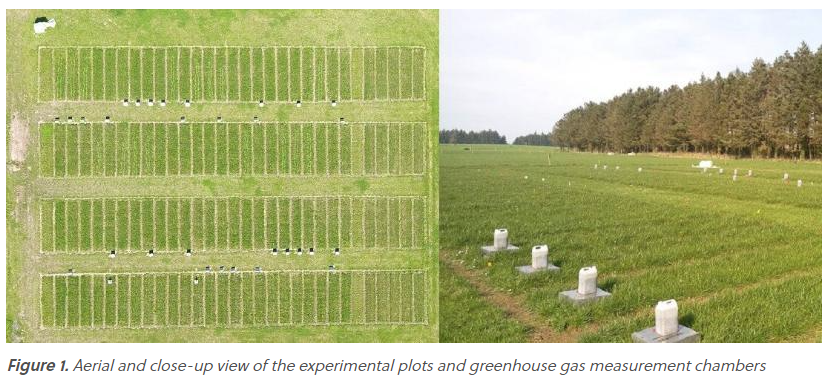



Liming can reduce greenhouse gas emissions while improving grassland productivity
Emerging research in Johnstown Castle, Ireland has shown that increasing soil pH by liming caused a significant reduction in nitrous oxide emissions and increased grassland productivity.The benefits of liming as an agronomic measure to ameliorate acidic soils and maintain soil pH at the optimum level for high crop productivity have been known for centuries. Lime is a natural and cost-effective soil conditioner which neutralises soil acidity and reduces the availability of harmful heavy metals to plants in acidic soils. Liming increases the activity of soil microbes and the availability of nutrients, most notably phosphorus (P), leading to improved plant growth. Soil samples analysed by Teagasc in 2015 showed that 65 percent and 55 percent of grassland and tillage soils are below the optimum pH, with up to 80 percent of soils in some Irish counties having a lime requirement.
Agriculture in Ireland releases about 90 percent of total nitrous oxide (N2O) emissions, which is one of the most potent greenhouse gases. Recent studies have indicated that N2O emissions are higher in acidic soils. Researchers Ognjen Zurovec and Karl Richards assessed the effect of liming on N2O emissions and grassland productivity in a long-term lime and phosphorus grassland trial at Johnstown Castle (Figure 1). The experiment was carried out as part of the EU ERA-GAS funded project "Mitigating Agricultural Greenhouse Gas Emissions by improved pH management of soils (MAGGE-pH)” which investigated the effect of soil pH on N2O emissions across Europe.
The soil at the Johnstown site was classified as acidic, with a pH of 5, but liming over 10 years resulted in soil pH ranging from 5.0 to 6.9. Results showed that increasing soil pH by liming resulted in significant reduction of N2O emissions and increased grassland productivity compared to the un-limed plots under the same management and fertiliser regime. The degree of reduction in N2O emissions mainly depended on the amount of lime applied across the experimental period. When soil pH was increased to 6.9, N2O emissions were reduced by 39 percent compared to control soil pH of 5.0 (Figure 2). The long-term results in terms of grass yield showed that the highest yields were achieved when liming was combined with regular P application. Plots limed to pH higher than 6 had 0.5 t/ha higher dry-matter yields, while the yields in limed plots with optimal P content (P Index 3) had 1.5 t/ha higher yields on average compared to un-limed soils with P Index 1.
The results clearly show that liming of soil to increase soil pH is a win-win solution for farmers through increasing grass yield and reducing N2O emissions. There is a potential that N2O emissions could be further reduced if the soil pH is increased above the agronomic optimum for most plants. However, this needs to be assessed further. Given that at least half of Irish soils are acidic, this solution has wide application and could contribute significantly to reduction of greenhouse gas emissions from Irish agriculture while maintaining or enhancing production.
To read more about soil pH and liming, visit Soil pH & Liming or consult your Teagasc advisor.




